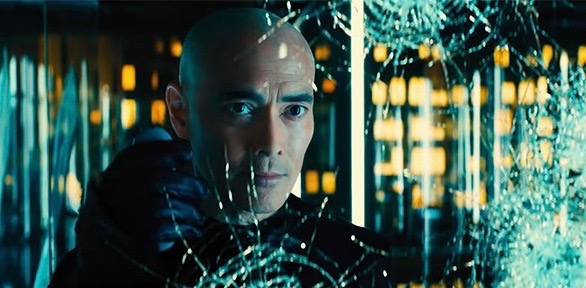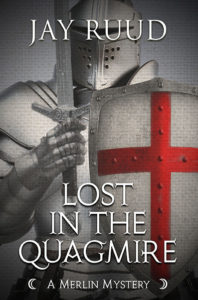John Wick: Chapter 3—Parabellum
Chad Stahelski (2019)
[av_image src=’http://jayruud.com/wp-content/uploads/2014/09/SusannTennyson.jpg’ attachment=313′ attachment_size=’square’ align=’left’ animation=’left-to-right’ link=” target=” styling=” caption=’yes’ font_size=” appearance=’on-hover’]
[av_textblock size=” font_color=” color=”]
It’s another week before the scheduled release of Disney’s new live-action version of Aladdin, in which Will Smith plays the genie that Robin Williams made famous in the original 1992 animated film. And it was probably a sure thing that this latest live-action cartoon was going to finally knock the juggernaut that is Avengers: Endgameout of the number one slot at the box office. So it may be a bit of a surprise that the latest chapter of the John Wick franchise was this week’s box office champ. But when you think about it, it’s not that much of a difference: John Wick: Chapter 3is nothing if not a live-action cartoon.
How else does one explain the gratuitous violence presented in a way that evokes absolutely no more empathetic response from the audience than Wile E. Coyote’s falling off a cliff or being blown up by a stick of dynamite? We know that Wile E. is not real—he’s just a drawing—just as we know that the dozens and dozens of would-be assassins chasing John Wick are cyphers—most of the time you can’t see their faces because it’s dark or raining or they are wearing helmets of some kind. It’s essentially a video game in which you rack up points by snuffing out the lives of imaginary foes. It’s no surprise, either, that there isa John Wick video game in which you, too, can kill or be killed. In a cyber-sense of course.
The thing that makes cartoonish violence undisturbing is the objectivity with which we view it: We know it’s not real, so we react differently than we would if it were, or if we could imagine it were. With Wile E. Coyote, we laugh. With John Wick, we may at times be tempted to laugh—I burst out laughing at one point when John dispatches an adversary with a library book. But the more likely response is a kind of awed hypnotic attraction to the choreographed and artistically set dances of death delivered by the film. It’s no accident that in one scene a group of ballerinas—albeit ballerinas apparently in training as potential assassins—perform their graceful movements onstage, choreographed by the New York City Ballet’s Tiler Peck, before being elegantly infiltrated by a group of real assassins. It’s director Chad Stahelski’s emblem of what he is doing with the violence in the film, inviting the viewer to see it as quite literally a ballet of brutality. (I should note that a spinoff film, tentatively entitled The Ballerina, is in the works, and is being given a pretty good launching point in this film).
Stahelski, who also directed the first two John Wick movies, was Keanu Reeves’ stunt double in the Matrixfilms and is a martial arts expert himself, so the primary interest of his direction is the meticulously choreographed combat scenes. These are enhanced in the film by the camera work of Danish cinematographer Dan Laustsen (who did the Oscar-nominated work in The Shape ofWater)as well as the impressive work of production designer Kevin Kavanaugh (who did TheDark Knight Rising) and art director Chris Shriver (who won an Oscar for Birdman). These artists created John Wick’s incredibly quirky battle in the aisles of a military museum—in which all kinds of historical weapons are displayed in glass cases, which Wick and his adversaries rhythmically, and with incredible precision, break into in order to get the next weapon with which to attack their opponents. Even more impressively, they framed his final epic battle in what amounts to a hall of mirrors, with colorful fluorescent-lit walls of glass.
As in the previous installments in this series, screenwriter Derek Kolstad has created a story without a whole lot of plot or dialogue: It’s the action scenes that are the meat of the film, as in an Asian martial arts movie (the final battle, in fact, is something of an homage to the hall of mirrors scene in Enter the Dragon) and, practically speaking, a good deal of John Wick 3’s gross receipts will be from foreign markets, particularly in Asia, and there is no necessity to dub or provide subtitles for action scenes, so…marketability!
But the plot that is here begins immediately after John Wick’s second chapter ends: Wick (Reeves) is, you might recall, a “retired” assassin who has worked for a large international conglomerate of assassins, ruled by a board of directors called the High Table. Goaded out of retirement by an enemy who steals his car and kills his dog, he takes vengeance on the perpetrator (basically that’s chapter one). Chapter two, which begins four days after chapter one ends, has John recruited by a criminal named Santino to kill his sister, so that he can take her place as one of the directors of the High Table. When John completes this task, Santino puts out a $7 million contract on him as the murderer of his sister, in order to deflect suspicion from himself, but John ends up killing Santino in the Continental in New York—which is, according to the rules of the High Table, a safe house. For breaking these rules, the Continental’s manager Winston (Ian McShane from TV’s Deadwood) declares him “excommunicato” puts a $14 million price on John’s head, but gives him a one-hour head start before he announces the global bounty on John’s head.
And that’s where chapter three begins. Basically, Wick plans to find “The Elder” (Saïd Taghmaoui from Wonder Woman), mysterious head of the High Table, somewhere in Morocco, and beg him for a chance to make right his defiance of the rules, and so get the $14 million bounty taken off his head. To get there, of course, he has to fight off assassins galore, and he also needs help in getting passage out of New York. For this he turns to The Director (Anjelica Huston), who runs the ballet-assassin school under the High Table’s auspices. She helps him get to Casablanca, where he tracks down another former associate who owes him a favor, the assassin Sofia (Halle Berry), who owns a pair of killerMalinois attack dogs who have a great time in another great fight scene. Casablanca, by the way, has never looked so good—maybe because this scene isn’t being filmed in Casablanca but in the beautiful Atlantic port city of Essaouira, as anyone who has visited either Casablanca or Essaouira will immediately recognize.
Meantime a robot-like High Table administrator called “The Adjudicator” (Asia Kate Dillon from TVs Billions) has been sent to the Continental to impose further penance for the Wick affair on Wick’s former allies, Winston and the quirkily independent Bowery King (Laurence Fishburne, Reeves’ and Stahelski’s old Matrixbuddy). To track down and finish the job on Wick, she also dispenses her own handpicked assassin named Zero (martial artist Mark Dacascos from TV’s Hawaii Five-O), a sushi chef who uses his skill with knives to work as a contract killer.
Some of the performances here are exceptional. Huston and Barre are memorable as usual, as are McShane and Fishbourne. Reeves has a type—tight-lipped and surly—that is the essence of John Wick and that he pulls off precisely. Dacascos’s is perhaps the standout performance here—his fan-boy adoration of the person he’s been sent to kill is a real hoot. In the end, though, there isn’t much meat in the film—it looks really good and has a few quirky plot twists, but beyond the technical virtuosity it doesn’t leave you anything more to think about than does a Road Runner cartoon. Sometimes, of course, that may be all you’re looking for. Two Jacqueline Susanns and half a Tennyson for this one.
Just named a finalist for the INDIE award for best Mystery novel of the year:
Jay Ruud’s most recent novel, Lost in the Quagmire: The Quest of the Grail, IS NOW a finalist for this year’s INDIE award for books by independent publishers. You can order your copy direct from the publisher (Encircle Press) at http://encirclepub.com/product/lost-in-the-quagmire/You can also order an electronic version from Smashwords at https://www.smashwords.com/books/view/814922
When Sir Galahad arrives in Camelot to fulfill his destiny, the presence of Lancelot’s illegitimate son disturbs Queen Guinevere. But the young knight’s vision of the Holy Grail at Pentecost inspires the entire fellowship of the Round Table to rush off in quest of Christendom’s most holy relic. But as the quest gets under way, Sir Gawain and Sir Ywain are both seriously wounded, and Sir Safer and Sir Ironside are killed by a mysterious White Knight, who claims to impose rules upon the quest. And this is just the beginning. When knight after knight turns up dead or gravely wounded, sometimes at the hands of their fellow knights, Gildas and Merlin begin to suspect some sinister force behind the Grail madness, bent on nothing less than the destruction of Arthur and his table. They begin their own quest: to find the conspirator or conspirators behind the deaths of Arthur’s good knights. Is it the king’s enigmatic sister Morgan la Fay? Could it be Arthur’s own bastard Sir Mordred, hoping to seize the throne for himself? Or is it some darker, older grievance against the king that cries out for vengeance? Before Merlin and Gildas are through, they are destined to lose a number of close comrades, and Gildas finds himself finally forced to prove his worth as a potential knight, facing down an armed and mounted enemy with nothing less than the lives of Merlin and his master Sir Gareth at stake.
Order from Amazon here: https://www.amazon.com/Lost-Quagmire-Quest-Merlin-Mystery/dp/1948338122
Order from Barnes and Noble here: https://www.barnesandnoble.com/w/lost-in-the-quagmire-jay-ruud/1128692499?ean=9781948338127


